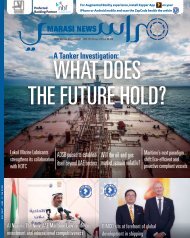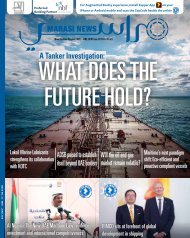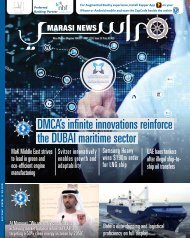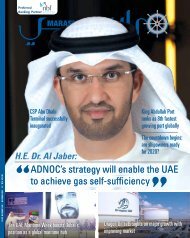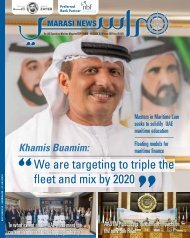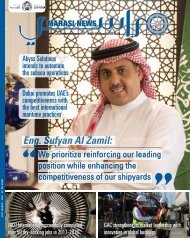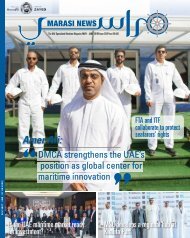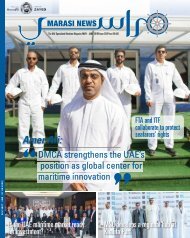Create successful ePaper yourself
Turn your PDF publications into a flip-book with our unique Google optimized e-Paper software.
EXPERT VIEW<br />
Arctics: is it a future<br />
transport route?<br />
By Dr. Ludmila Balabina<br />
Associate professor<br />
St.-Petersburg State<br />
University of Economics<br />
By Ksenia Zudinova<br />
Executive Director of<br />
Emirates Zone, PhD<br />
Candidate, St.-Petersburg<br />
State University of<br />
Economics<br />
It is hardly possible to overestimate<br />
strategic and economic importance<br />
of transport routes (both by sea and<br />
land) laying through the territories of<br />
individual countries. In strategies of<br />
developing the economies of a number<br />
of countries, among other goals,<br />
the tasks of creating and developing<br />
transport infrastructure are laid. International<br />
projects are being created<br />
as for example, the economic belt<br />
of the silk route.<br />
Geography of countries may or<br />
may not facilitate such cooperation.<br />
But there are unique geographical<br />
positions of the country that can<br />
help solve problems not only to expand<br />
trade cooperation and increase<br />
trade flows, but also in general the<br />
development of entire territories. For<br />
Russia, such a unique project is the<br />
development of the Russian Arctic<br />
and its near-Arctic territories. But<br />
the socio-economic development of<br />
these territories is impossible without<br />
the reliable functioning of the<br />
Arctic maritime transport system.<br />
The Arctic is unique in its bioresources,<br />
it is called the "weather kitchen",<br />
it is a mineral deposit and for these<br />
reasons is attractive for many countries<br />
with unregulated territories.<br />
The development of the richest<br />
natural resources and the interest in<br />
developing them from the rapidly developing<br />
countries of the Asia-Pacific<br />
region makes the Far Eastern transport<br />
direction promising for Russia.<br />
Typically, the Arctic is understood<br />
as the northern polar region adjacent<br />
to the North Pole and bounded by<br />
the Arctic Circle (66 degrees 33 minutes<br />
N). This polar region includes<br />
land and sea spaces and airspace<br />
above them. The territory of the Arctic<br />
zone extends to 27 million km2<br />
and is divided into five sectors of responsibility<br />
between the US, Russia,<br />
Norway, Canada and Denmark. Land<br />
areas are under the sovereignty of<br />
the respective Arctic state. The marine<br />
part of the Arctic zone of Russia<br />
extends to seven seas - the Barents<br />
Sea, the Kara Sea, the Laptev<br />
Sea, the East Siberian, the Chukchi<br />
and the Bering seas. Russia declared<br />
claims to all the sea areas, including<br />
the straits - Vilkitsky, Shokalsky,<br />
Dmitry Laptev and Sannikov, which<br />
make up the Northern Sea Route<br />
(NSR), as historical.<br />
About 90% of the total area of<br />
Russia's shelf, which is 5.2 - 6.2 million<br />
km2, falls on the perspective oil<br />
and gas bearing areas. The Timan-<br />
Pechora, Yeniseisko-Laptevskaya,<br />
Barents-Kara, Indigiro-Chukotka oil<br />
and gas bearing provinces, as well as<br />
the Yuzhno-Yamal, Lena-Anabar and<br />
Anadyr oil and gas regions contain<br />
huge forecasted oil and gas reserves.<br />
The Northern Sea Route (NSR) is a<br />
waterborne northern transport artery,<br />
the potential of which, according<br />
to today's opinion, is only used by<br />
10%.<br />
The latest forecasts for the<br />
planned volumes of cargo transpor-<br />
60 JANUARY - FEBRUARY 2018







